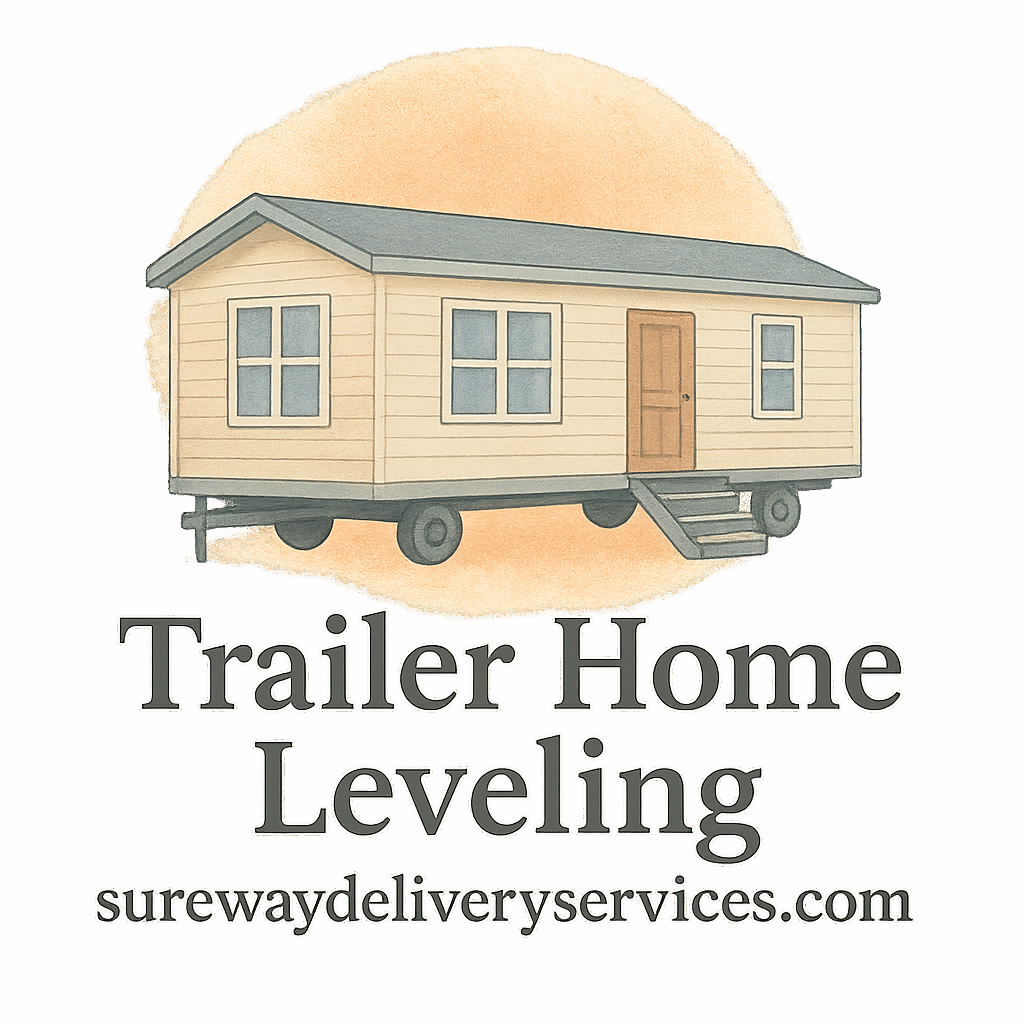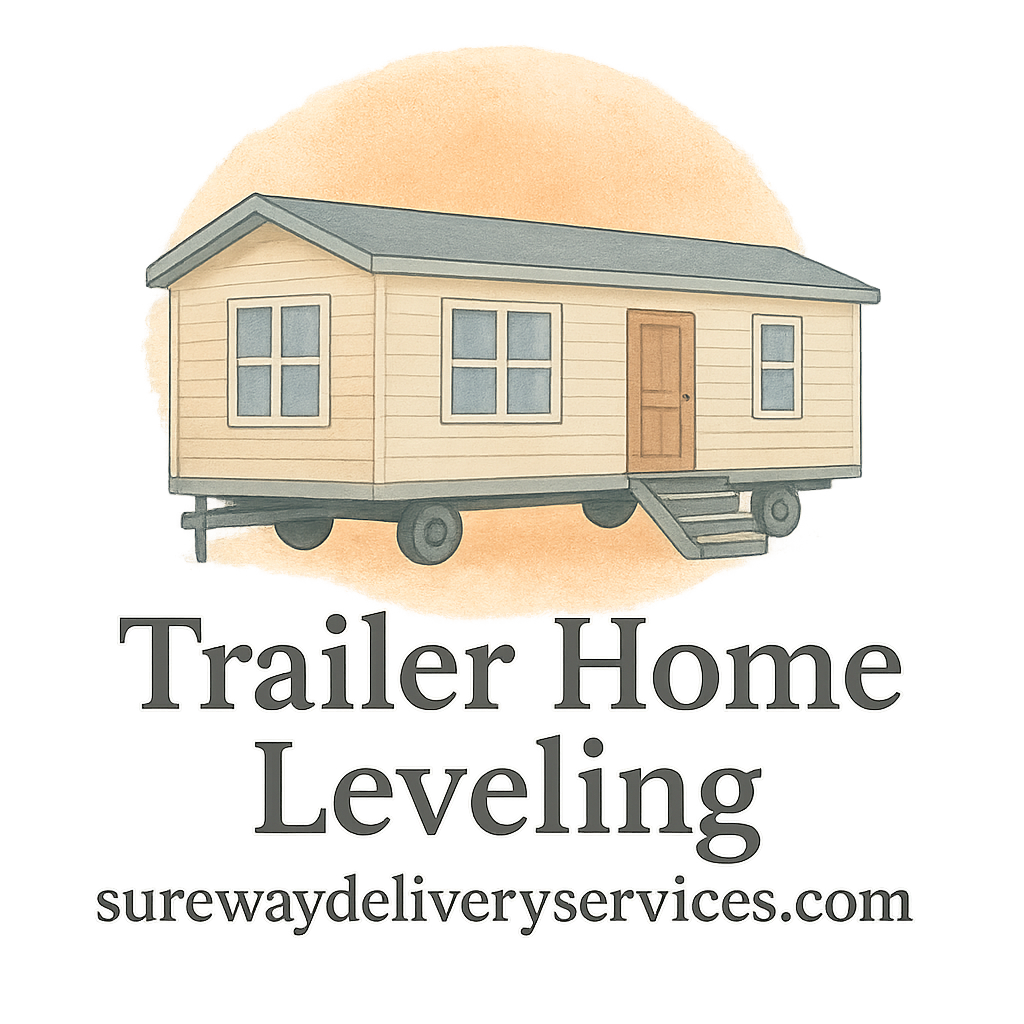Introduction: Why Proper Leveling Matters
Imagine living in a house where your floors are tilted, your doors won’t close, and your water doesn’t drain right. Not fun, right? That’s exactly what happens when your trailer home isn’t level. Proper leveling isn’t just about comfort—it’s about safety, functionality, and protecting your investment. Let’s break down why getting it right matters and the essential tools you’ll need for the job.
What Happens When Your Trailer Home Isn’t Level?
Structural Issues
An unlevel trailer home can lead to stress on the structure. Over time, this can cause cracks in the walls and ceilings, uneven flooring, and even separation between sections in multi-piece homes.
Plumbing and Drainage Problems
Water doesn’t flow uphill. When your trailer isn’t level, plumbing can get messy. Expect backups, slow drainage, or even burst pipes in extreme cases. This is where trailer home maintenance and inspection come into play.
Safety Concerns
Unlevel homes pose risks like shifting furniture or appliances, and even tripping hazards. Plus, structural imbalances can become serious dangers over time.
Can You Level a Trailer Home Yourself?
Yes, you can! With the right tools and a bit of know-how, DIY trailer home leveling is totally doable. While professionals offer great service (see here), many homeowners choose the DIY route to save money and learn the ropes. Just remember: it’s critical to work safely and smartly.
Tool #1: Hydraulic Bottle Jacks
What Are They?
Hydraulic bottle jacks are powerful lifting tools shaped like—you guessed it—a bottle. They can lift heavy loads with minimal effort.
Why They’re Essential
You’ll use these to raise sections of your trailer home to insert leveling blocks or shims. A set of 12-ton jacks is usually sufficient, but this depends on your home’s size and weight.
Safety Tips When Using Jacks
- Always use on solid, stable ground
- Never crawl underneath while in use
- Use jack stands or stabilizers for safety
Hydraulic jacks are often mentioned in expert trailer leveling techniques.
Tool #2: Bubble Level or Digital Level
Bubble Level vs. Digital Level
A bubble level is old-school but reliable. A digital level gives precise readings. Either works—pick based on your comfort and budget.
Placement Techniques
Place your level inside on the floor and across countertops. Check multiple rooms. Don’t forget diagonal measurements too!
For a complete checklist, include leveling in your routine inspections.
Tool #3: Wood or Plastic Shims
Choosing the Right Material
Plastic shims resist moisture and bugs, but wood is more budget-friendly. Make sure they’re sturdy and not cracked or warped.
How to Place Shims Correctly
Insert shims between the support piers and trailer frame until the bubble is centered. Don’t overstack—this weakens the setup.

Tool #4: Stabilizer Jacks or Jack Stands
What They Do
These tools don’t lift your home—they keep it steady once it’s level. Think of them as the backup singers to your hydraulic jacks.
Where to Place Them
Install near the corners and central beams for best results. Use more for larger trailers. Combine with other maintenance practices.
Tool #5: Heavy-Duty Blocks
Concrete vs. Composite Blocks
Concrete is classic, but heavy. Composite is lighter and weather-resistant. Either option must be strong and uniform in size.
How to Stack and Secure Them
Use a criss-cross pattern for stacking. Secure with shims or wedges. Don’t place blocks directly on dirt—add a solid base first.
For detailed cost info, check out our cost and budgeting guide.
Bonus Tools Worth Considering
Trailer Home Leveling Kits
Pre-packaged kits often include jacks, levels, and blocks. Great for beginners and quick jobs.
Laser Levels
These offer next-level precision. If you’re all about accuracy, you’ll love this tool.
Step-by-Step Guide: How to Use These Tools Safely
- Inspect the trailer’s current level
- Place your level inside—check several rooms
- Use hydraulic jacks to lift one corner at a time
- Insert heavy-duty blocks and shims as needed
- Re-check with level after each adjustment
- Install stabilizer jacks once leveling is done
- Inspect thoroughly and note any trailer issues
Common Mistakes in DIY Trailer Leveling
- Not using a level properly
- Over-stacking shims
- Skipping stabilizer jacks
- Forgetting about moisture and rot risk with wood
Check out other trailer leveling tips to avoid rookie errors.
When to Call a Professional
If the ground is too uneven, your trailer is unusually heavy, or you notice ongoing leveling issues, it’s time to call in a pro. Check customer reviews before choosing a provider.
Final Thoughts
Leveling your trailer home isn’t rocket science—but it’s not a walk in the park either. With the right tools—like hydraulic jacks, levels, shims, stabilizers, and blocks—you can get the job done confidently. Remember, consistency is key, and a little maintenance goes a long way.
Want to dig deeper? Start with our trailer leveling introduction or browse success stories from other homeowners.
FAQs
- How often should I level my trailer home?
It’s smart to check your level every 6–12 months or after extreme weather. - Can I use car jacks for leveling?
No, car jacks aren’t rated for trailer home weights. Stick with hydraulic bottle jacks. - Are leveling kits worth it?
Absolutely. They simplify the process and are great for DIY beginners. - Do I need a permit for leveling my trailer?
This varies by location. Check local regulations or your trailer park rules. - Can leveling fix squeaky floors?
It might! An unlevel floor often causes squeaks. - Is it okay to level on soft soil?
Nope. Always use a solid base like concrete pads or gravel to prevent sinking. - What’s the biggest mistake people make when leveling?
Skipping safety steps—never crawl under your trailer unless it’s fully supported!
For more DIY guides, visit our main site at Trailer Home Leveling.
Tags: home-leveling, tools, jacks, trailer-leveling, inspection, checklist, maintenance, price, trailer-home, trailer-maintenance.


